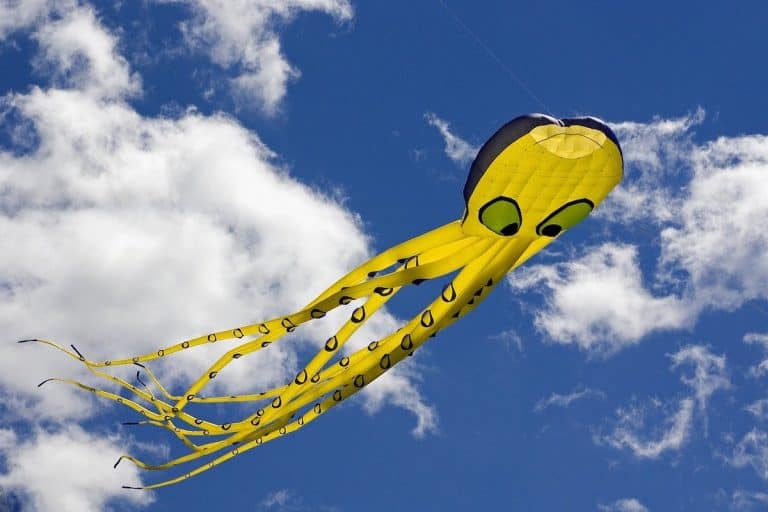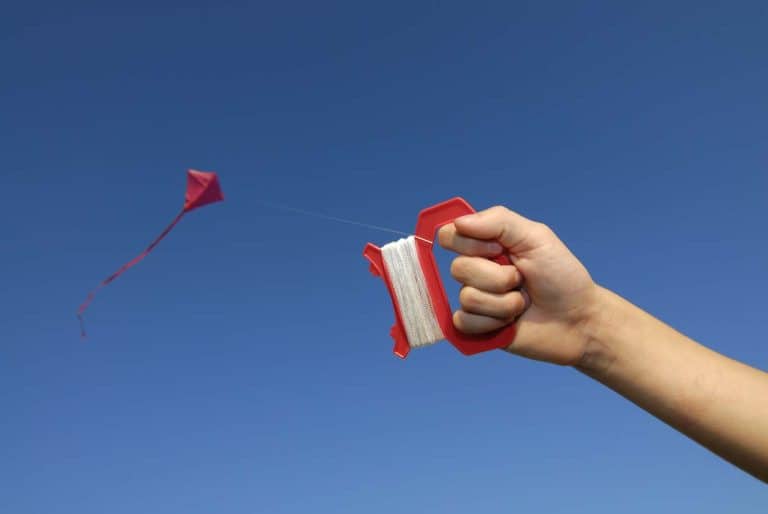This Is What Makes A Good Stunt Kite
Usually, stunt kites, also known as sport kites, are built around maneuvering the air with greater precision and control. You can determine a good stunt by considering a kite’s practicality, flight control, wind range, and fun factor.
Physical Characteristics of Stunt Kites
The best way to identify if the kite is a stunt or sports kite is how these kites are roughly triangular, which pays homage to the Rogallo Wing design. This design helps in moving the kite with integrity and rigor. SO aside from the triangular shape, there’s also a W-Shaped panel. The W-Shaped board has four lines for control, whereas the triangular has only two lines.
W-Shaped
The W-Shaped consists of lightweight materials such as ripstop nylon or polyester with carbon fiber tubing and beams. The lines are ultra-high-molecular-weight polyethylene that is light, flexible, and slippery.
Dual Line
Dual-line sports or stunt kites can be controlled by increasing and releasing tension on each line from right to left. The handler or the pilot can pull the right line to turn the kite on the right, then drag the left bar to move the kite to the left. If you pull the opposite bars, the kite will fly straight. But if it’s pushed, the left line will release air and turn the kite to the right.
Quad Line
Another one would be the Quad-line kites controlled with a pair of handles. Each handle has two lines attached to the top and bottom. Flying a quad-line kite will require complex maneuvering and the application of appropriate tension to the four lines. The kite will experience more force on the lines held under higher pressure. Quad lines have a more complex and intricate control since it opts to perform more tricks such as reverse flight, hovers, spins, and side-to-side flight.
All in all, stunt kites require practice and mastery to get their fullest feature and performances.
What Are The Types Of Sports Or Stunt Kites?
In a blog from Fly 360 published on December 1, 2017, Nisarg listed the four main types of stunt kites commonly used in kite competitions or sports. These four main stunt kites are Dual Line Delta Stunt Kites, Dual Line Diamond Stunt Kites, Dual Line Parafoil Stunt Kites, and Quad Line Kites. (source)
Dual Line Delta Stunt Kites
This kite has a main spar and two leading-edge spars with stretched fabric in-between these two spars. One or more horizontal spreaders may help maintain the kite’s shape. It is primarily triangular, accompanied by unique or distinct designs to give it an aesthetic feeling or look. You can use it for night kite flying since you can install led lights into the spars.
Dual Line Diamond Stunt Kites
This sports kite has similar steering features to delta kites. It is an imitation or replica of the traditional kites in parks or open spaces. Most diamond kites have tails to sustain their balance and stability while being in the air. No tail means there is potential that the diamond kite will not be in the wind for a long time. So, don’t forget the tail!
Dual Line Parafoil Stunt Kites
This kite has a single surface sail, and the parafoil has an upper and lower surface. A dual-line parafoil keeps its shape by allowing air to pass through the holes along the front edge. This kite works by expanding the air to take off the soft beauty. Hence, enabling pressure during its flight. This type of kite suits the surfers and can be customized or personalized based on a particular team’s requirements for local or international kite surfing competitions or sports.
Quad Line Revolution Kite
Quad-line kites are composed of two joint kites. These kites have two extra lines that enable the kite handlers or pilots to navigate different directions and perform tricks like axis spins and hovers. Because there are two lines attached to each handle, steering this kite is convenient and easy.
How To Fly A Stunt Or Sport Kite?
You’re now familiar with the typical four types of stunts or recreational kites. This time it’s time to understand and explore the navigation or flying process of a stunt or sports kite. Just a reminder that stunt or sports kites do have intricate or complexity in their functions and features and the same with their process of maneuvering.
Essential Steps To Control Your Kite
-
- Steering Dual-Line Kites
If you are handling double line or quad line kites, it’s essential to have a good grip on these lines. If not, then there will be a potential non-deliberate release on your kite, and one thing you should remember is that when in a competition, make sure you have the poise to secure your hold. Never be scared to push or pull the lines when necessary to move around the wind. Keep in mind the wind tends to get stronger and more unpredictable. Hence, the best way is to analyze the flow by either pulling the left line with your left hand or vice versa. Advanced pilots also push instead of pulling to achieve seamless and quick turns and tricks. Combining the push and pull technique will render snap-style turns that are precise and speedy.
-
- Steering Quad-Line Kites
Steering quad-line differs from steering dual-line kites. The sails on stunt kites are tight, and for you to steer the kite, you have to tilt and twist the steers. Quad line kites demand to move the rear lines by pulling left or right on the handles. Aside from that, you must consider that pulling too much on each handle will cause your kite to slide from left to right and not rotate. Generally, the controls are somewhat the same. It’s just that there are brake lines instead of top lines. IN this case, pulling the right brake turns your kite to the right, while drawing on the left brake will tilt your kite to the left direction. Thus, providing you great control of your kites. It is best to use both hands on each handle to maneuver quad-line kites perfectly and smoothly.
-
- Forward And Reverse Flight
You have to use your thumbs back and then launch the kite to extreme altitude to reverse your kite. Then progressively rotate your kite’s handles while your thumbs pin forward. Hence, causing the kite to back down. This technique needs a lot of conscientious practice and exercise since it mainly involves your thumbs. You would notice that you are doing well in performing this technique when the kite is flying in a straight direction.
-
- Horizontal Flight
This technique applies pressure to your right thumb and then retreats your thumb back. When the kite is nearing the edge of the wind, you can turn left and fly horizontally. Attempting this move must be smooth, straight, and in continuous flight.
-
- Fly and Slide
Pull back on the lower wing handle when beginning to fly back and forth with your arms extended completely. It will cause the kite to slide down as it passes across. Afterward, extend the lower ring handle and pull back the upper wing handle while slides. This technique is for the advanced ones, but you can master it and be an expert with much practice and drills.
Since you have read throughout the basic to advanced techniques, maybe now you can choose the best stunt kite of your liking or interest. These techniques or strategies are suitable for performances and competitions. On the other hand, if you plan to join kite competitions, starting with these approaches may help you explore different methods to make your performance astonishing.
What Makes A Good Stunt Kite?
Techniques and approaches will not be possible if you will not invest in quality stunts or sports kites. In a blog post from Science Focus published last August 10, 2010, Luis listed the four best kites as a basis for identifying a good stunt kite. (source)
But before that, he asked questions that would help you look for a well-suited recreational kite.
These questions varied from practicality, flight control, wind range, and fun factor.
-
- Practicality
How small does the kite fold up? Are there non-durable and flimsy pieces that you can lose during a flight? How fragile is the kite?
-
- Flight control
Is the kite easy to move around the wind? Are the handles responsive to my movements and coordination? Will it stay up in the air longer? How many times did it crash?
-
- Wind Range
Can the kite manage extreme wind? What does the kite look like in the wind? Does it seem like it can’t hold the wind much? Do its deflecting features work appropriately?
-
- Fun Factor
Will I have fun flying this kite? Does it keep the crowd amazed or fascinated and pique the audience’s attention, or do they get bored with the kite’s look and feel?
These are the fundamental questions you can ask yourself when picking or selecting a stunt kite of your own.
Best Sports And Stunt Kites For Beginners
Going back to the topic, in a posted blog from Sidmartin Bio published on November 23, 2019, Esther recommended the best sports or stunt kites for beginners.
Prism Nexus Dual-Line Stunt Kite
It is a delta kite that ticks all of the requirements and would fit the needs of either beginners or serious pilots, or kite enthusiasts. Esther also wrote that its 64 inches wingspan is wide enough to provide you with a real-kite performance. You can find this model, Prism Nexus Dual-Line Stunt Kite, anywhere on the internet.
Prism Kite Technology Zenith 5 Single Line Delta Kite
The Best Covery also published their top stunt kites for pilots and enthusiasts on their blog last May 12, 2022. The Prism Kite Technology Zenith 5 Single Line Delta Kite is on their first list. This kite comprises two kites for one, around the price of 40 bucks. Which means it’s worth every penny. This kite started as a single line with a diamond shape with a tail for stabilization. Thus, making it easy to fly. (source)
Babyeden Large Dual Line Stunt Kite
Next on their list would be Babyeden Large Dual Line Stunt Kite. This kite has a delta-shaped body that consists of 7 nylon panels that fit carbon-framed rods. On the flip side, this kite needs extra effort and energy to assemble or put together since most of its parts are complex with sophisticated configurations and features. But on a positive note, this kite can do some basic tricks with minimal effort.
Stunt Kites In A nutshell!
So, to wrap everything up, it would be best to select stunt kites that would fit your body composition and the tricks or techniques you will be performing. In addition, it is best to include the fun factor to amaze the audience and the judges if you will be joining stunt kite competitions.







